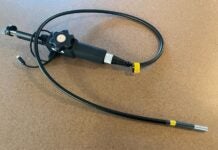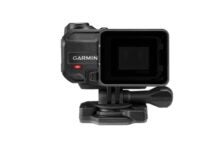 Astronics Max-Viz, is introducing the X1+HR (high resolution) Enhanced Vision System (EVS) for experimental and homebuilt aircraft. It will be on display at the Astronics Booth #3077 at EAA AirVenture 2016 in Oshkosh.
Astronics Max-Viz, is introducing the X1+HR (high resolution) Enhanced Vision System (EVS) for experimental and homebuilt aircraft. It will be on display at the Astronics Booth #3077 at EAA AirVenture 2016 in Oshkosh.
Priced at $18,000, the uncertified X1+HR sensor uses a 640×480 pixel resolution long wave infrared thermal imager with electronic zoom to assist pilots of experimental and homebuilt aircraft, which often operate from unimproved airstrips with wildlife and other obstacles. It is compatible with any display that accepts NTSC or PAL/Analog RS-170 signals.
“The new X1+HR EVS provides all of the benefits of our recently introduced X1 EVS and top end features in terms of quality and resolution of the image presented,” said Astronics Max-Viz Executive Vice President Elliott Troutman. “It is a major step up for experimental and homebuilders looking for a sophisticated system that adds a tremendous safety component to their flying adventures.”
The system, which only weighs 1.2 pounds, allows pilots to see temporary obstructions, such as wildlife and construction barriers, which may not be visible and are not in any synthetic vision database. The X1+HR enhances safety for the experimental pilot community by enabling pilots to see up to 10 times further than unaided human vision in visibility-obscured conditions, such as smoke, haze and light fog, in daytime or nighttime.
It features a lightweight, solid-state, uncooled thermal camera with a sensor image that can be displayed on Garmin G500, G600, G1000, Avidyne R9, Bendix King KMD-850, AvMap EKP-V, Flipper, Rosen monitors and EFBs. Individual pins for control switches allow maximum placement flexibility. Multiple horizontal field of view options include: 45°, 69°and 90°.
The new system has a metal fairing design, a Composite Video signal format (NTSC or PAL), selectable white-hot/black-hot polarity and is DO-160G compliant. The integral window heaters permit operation in all conditions with a temperature operating environment from -55° C to +70° C. The system features pixel non-uniformity correction, is manufactured in an AS9100 certified facility, and has solid state technology which means no routine maintenance is required.
For more information, visit max-viz.com.











